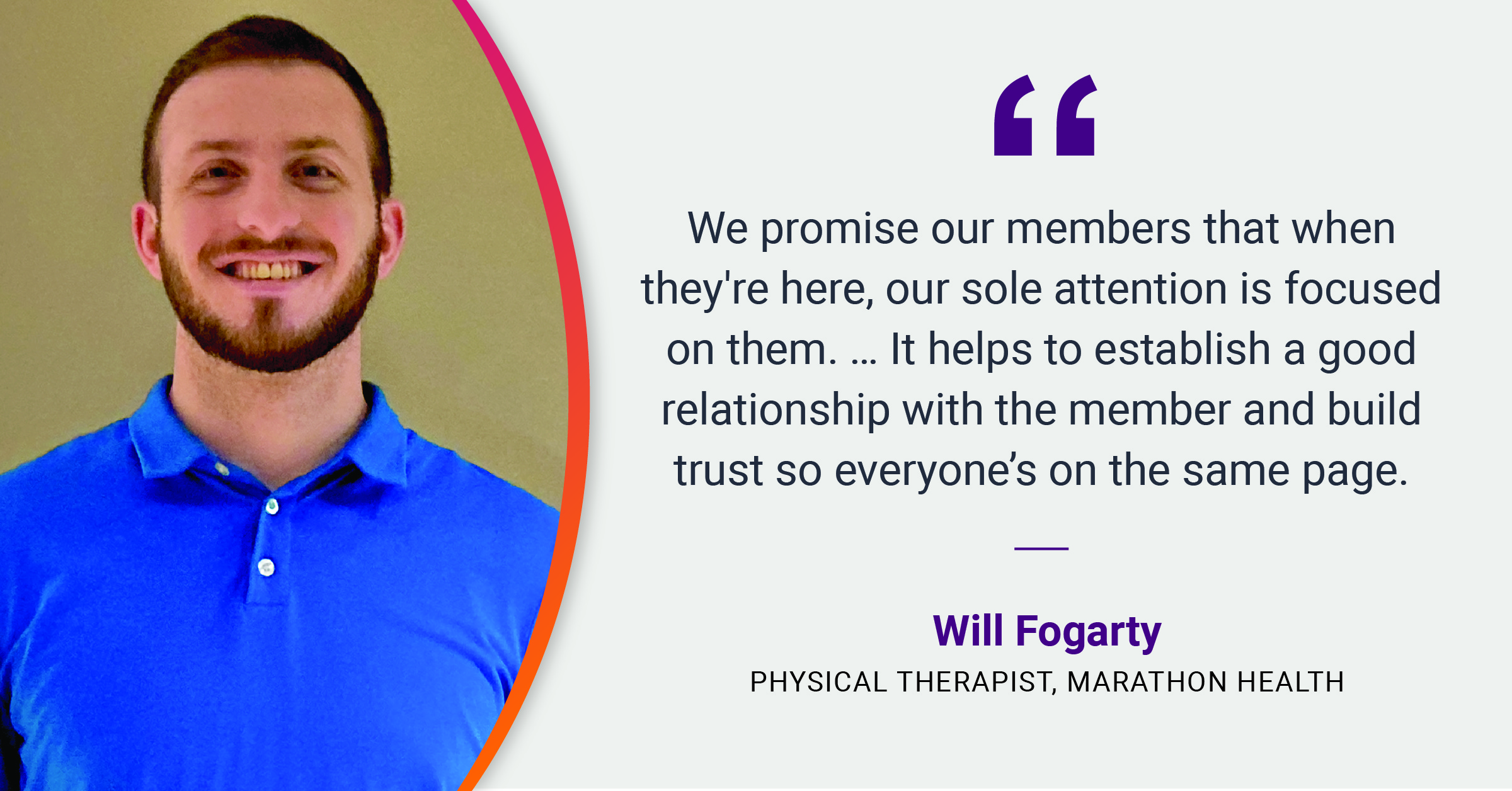You care about your employees. And, you both care about healthcare. A recent Marathon Health survey reveals both human resource leaders and employees believe healthcare coverage is the most important benefit offered. Workforce health solutions can not only improve employees’ health and satisfaction, but reduce costs, attract and retain employees, increase access and result in happier more productive workers.
Along with different vendors that offer employer-sponsored healthcare options, there are different options, from onsite healthcare centers to Network health centers around your town and virtual primary care. Finding the right partner and solution will ensure your organization’s success, long-lasting employee engagement and overall satisfaction.
Is an Employee Onsite Primary Care Solution Right for Your Workforce?
Onsite health centers are perfect for large organizations. However, the number of employees alone should not influence the decision to bring healthcare to your worksite. Onsite health centers offer employees access in the form of convenience.
Other benefits of onsite centers include personalized offerings based on the needs of your employee population. This solution also offers employers the ability to mirror staffing models to match your work schedule and integration of other existing services such as fitness centers.
TJ Eckels, Senior Manager of Employee Benefits and Wellness at Sheetz, a convenience store chain, says they reviewed their options and ultimately chose an onsite health center. “With 24/7/365 operations, we wanted a way to reduce healthcare costs while understanding and helping our employees with diabetes, hypertension and cholesterol issues,” Eckels says. “We are all about family values, so an onsite employer-sponsored healthcare center felt right for us.”
Deciding to bring healthcare onsite may be the perfect fit for your company’s culture and set you apart as offering a robust benefit, especially in a competitive hiring market.
Centers can range in costs to build, depending on the desired size and services offered. Monthly fees cover management of the center, including care team salaries, and fees can vary depending on the services offered. Typically, it takes a couple of years to start to see the return on investment, but the impact on employees’ health can be quicker and invaluable.
Workforce Health Solutions Include Shared Network Centers
If an onsite health center isn’t right for your situation, consider a Network health center: ideal for organizations in one geographical region.
“With Network health centers, the location is shared by multiple employers and includes the same Marathon Health promise and care model,” says Jeff Wells, CEO and co-founder at Marathon Health. “Networks are effective for dependent engagement, which is a big driver of health plan costs. And, if you’re a small or large employer with a distributed or remote workforce, you can plug into a Network center.”
Network centers offer convenient access to multiple locations for employees, spouses and dependents, along with expanded hours on evenings and weekends. The centers are often located near other highly accessed retail outlets — typically within 10 miles of where your employees live, work and shop — and are ideal for satellite work locations.
These centers don’t require space at your business or buildout costs. The centers are shared by other employers in the area and costs are shared. Monthly fees for a Network center are based on the number of employees using the benefit and vary depending on the various services offered to employees.
Virtual Health Solutions for Remote Employees
Available for employers of any size, there are many options when it comes to virtual care. Not all solutions are the same, as many just address sick or urgent care needs. Look for a partner who offers 24/7 access to full-service virtual primary care and sick care, behavioral health counseling, wellness services and health coaching.
“Where your employees live shouldn’t limit the healthcare options you provide for them and their families,” says Michael Gonzales, Executive Vice President of Growth and Strategy at Marathon Health. “We have taken our relationship-driven model, enhanced with digital tools and services, and made it accessible virtually.”
Technology helps support virtual health care. For example, your employees can utilize connected devices for remote monitoring as part of the service. Bluetooth-enabled devices provide timely information —sent directly to care teams — from employees with chronic conditions, such as diabetes, high blood pressure and obesity.
Viable virtual workforce health solutions should offer continuity of care, charge employers only per participant, and provide different tiers of care based on the health needs of your employee population.
Customize a Workforce Health Solution for Your Situation
Look for a provider who offers personalized workforce health solutions that are customized for your situation. Organizations should have the option to offer a hybrid model of care, for example, that may include any or all of the solutions, combining onsite, Network and virtual primary care.
Ultimately, a solution should maximize service offerings to drive greater health outcomes and easy access to care. Regardless of which solution you select, partner with an organization whose culture is rooted in improving healthcare and truly interested in involving the patient in a preventive and whole-person approach.
Along with fitting into your existing culture and engaging your employees, a great partner assumes some of the risks and offers a guarantee to improving health outcomes.
Committing to bringing healthcare to your employees requires keeping employees engaged. The partner you choose should smartly and securely communicate with employees, reminding them of key touchpoints while supporting their ongoing wellness journey. For the employer, your partner should provide secure meaningful reporting which demonstrates a qualitative and quantitative return on investment.
Ready to put healthcare to work for your organization? Download our checklist to get started
You might also like
Subscribe to our newsletter and stay on the cutting edge of worksite healthcare.










